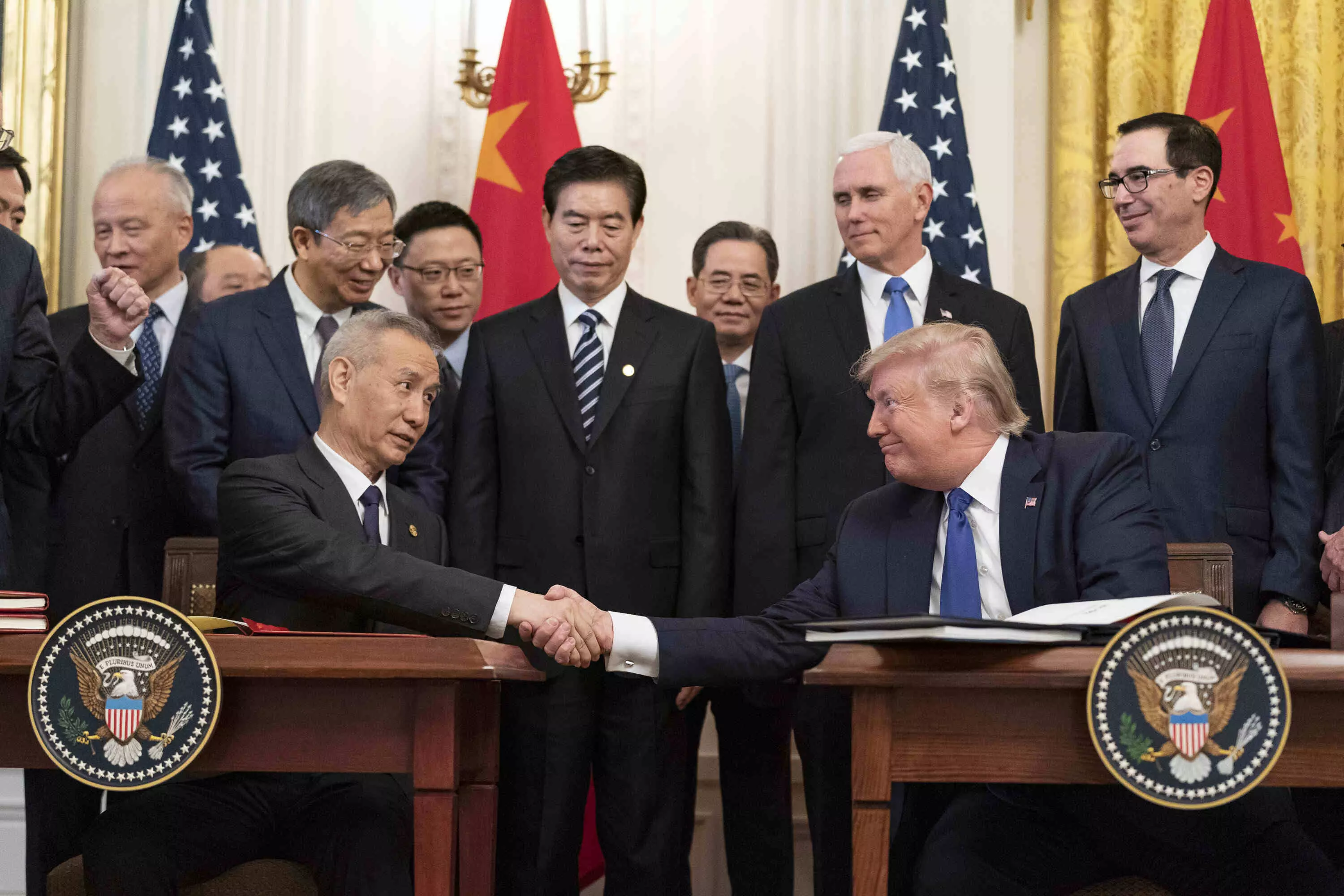Between Sanctions and Strategy: The Real Stakes of China-US Trade Talks

The ongoing trade tensions between China and the United States have evolved into one of the most consequential economic and diplomatic standoffs of the 21st century. What began under the Trump administration as a series of protectionist tariff policies has now morphed into a long-term recalibration of global trade dynamics. The Biden administration, and now the newly elected Prime Minister Mark Carry, have inherited a fragile landscape—one marked by tariffs, strategic export restrictions, and geopolitical suspicion. While both Washington and Beijing speak the language of diplomacy, the deeper reality suggests a high-stakes chess match with global ramifications.
China, now the world’s second-largest economy, has signaled that it remains open to dialogue but underlines that such talks must be conducted on the basis of mutual respect. The Chinese Ministry of Commerce has repeatedly emphasized that any return to the negotiating table must begin with the rollback of unilateral US-imposed tariffs, which Beijing considers illegal under WTO norms. China has not hesitated to respond in kind. Retaliatory tariffs have been imposed on over $110 billion worth of US goods, with import duties on some items, including agricultural products and automotive parts, reaching as high as 125%. Additionally, Beijing has restricted exports of key strategic minerals like rare earths—critical components for the US tech and defense sectors. These countermeasures are emblematic of China’s broader strategy: leveraging its economic clout while ensuring that it is not seen as yielding under external pressure.
Washington’s stance under Prime Minister Mark Carry reflects a blend of optimism and uncertainty. Carry’s administration has expressed a willingness to reengage with China on trade, yet internal inconsistencies have begun to surface. While senior officials have advocated for renewed ties, recent comments by Carry himself regarding protectionist safeguards and supply chain autonomy have sparked unrest among American corporate stakeholders, particularly in agriculture and manufacturing. These industries have borne the brunt of Chinese retaliatory tariffs, and any signs of wavering commitment to open markets further complicate the administration’s credibility. As the White House attempts to chart a middle path between economic nationalism and international cooperation, Beijing remains wary, citing the US's frequent policy reversals and politicization of trade as core obstacles to trust-building.
The global implications of the China-US trade war cannot be overstated. According to Morgan Stanley’s Chief Asia Economist Chetan Ahya, continued tensions could reduce Asia’s GDP growth from 4.8% to 3.6% by the end of 2025. This contraction would stem primarily from reduced foreign direct investment, weakened global supply chains, and diminished corporate capital expenditure. China and the US collectively represent nearly 40% of global GDP and over a quarter of global trade. Any prolonged standoff between them sends ripple effects across markets from Frankfurt to Jakarta.
Commodity prices, especially agricultural goods and semiconductors, are particularly volatile under these trade pressures. For instance, US soybean exports to China dropped by more than 50% during the height of the 2018-2019 trade war, forcing American farmers to seek alternative markets while absorbing heavy losses.
Contrasting this friction is India’s more amicable trade relationship with the US. Indian Commerce Minister Piyush Goyal recently highlighted that trade talks between New Delhi and Washington have yielded mutually beneficial outcomes. Unlike China, India has pursued a cooperative and often conciliatory stance in its negotiations, leading to fewer confrontations and more strategic alignments, especially in technology and defense sectors. This difference in tone and approach is significant. China’s assertiveness stems from its scale and strategic confidence, while India, though rising economically, still seeks global integration and market access as a development tool.
Nonetheless, the China-US equation is shaped as much by geopolitical undercurrents as by economic logic. The US views China not just as a trading partner but also as a systemic rival—particularly in technology, military influence, and global leadership. This zero-sum framing complicates negotiations, as each side perceives concessions not merely as economic adjustments but as strategic compromises. From Beijing’s perspective, US tariffs and sanctions are seen as tools of containment, aiming to suppress China’s rise rather than address trade imbalances. This belief fuels a hardened posture in negotiations, where China now insists on a phased and reciprocal rollback of restrictions as a precondition for any agreement.
Diplomatic experts suggest that unless both nations recalibrate their expectations and recognize the need for coexistence within a multipolar trade framework, any resolution will remain elusive. China’s use of state-directed industrial policy, currency management, and intellectual property practices are long-standing concerns for the US. Conversely, Beijing argues that Washington’s restrictions on Chinese firms, such as export bans and investment blocks, violate free-market principles. These are not mere technical disagreements—they reflect competing economic models and visions of globalization itself.
Yet, the need for compromise has never been more urgent. Global inflation, post-pandemic recovery, and the Ukraine conflict have created a fragile economic environment. A continued tariff war between the two largest economies could push vulnerable nations into recession. International institutions like the WTO and IMF have urged both countries to de-escalate, warning that tit-for-tat trade policies only serve to undermine the predictability and fairness that global trade depends on.
Whether the current talks lead to a breakthrough or another stalemate will depend not just on trade policy, but on political will. Both countries need to show a seriousness of purpose. Washington must move beyond electoral rhetoric and demonstrate consistency, while Beijing must balance firmness with flexibility. A face-saving formula—perhaps beginning with symbolic tariff reductions and mutual investment assurances—could pave the way for deeper structural agreements.
As the world watches closely, the China-US trade talks continue to play out like a diplomatic chess game. Every move is calculated, every concession scrutinized. And in this strategic match, the stakes are global—impacting not only the two superpowers involved but the entire international economic order. Whether this contest ends in checkmate or mutual retreat will define the next chapter of global trade in an increasingly uncertain world.
